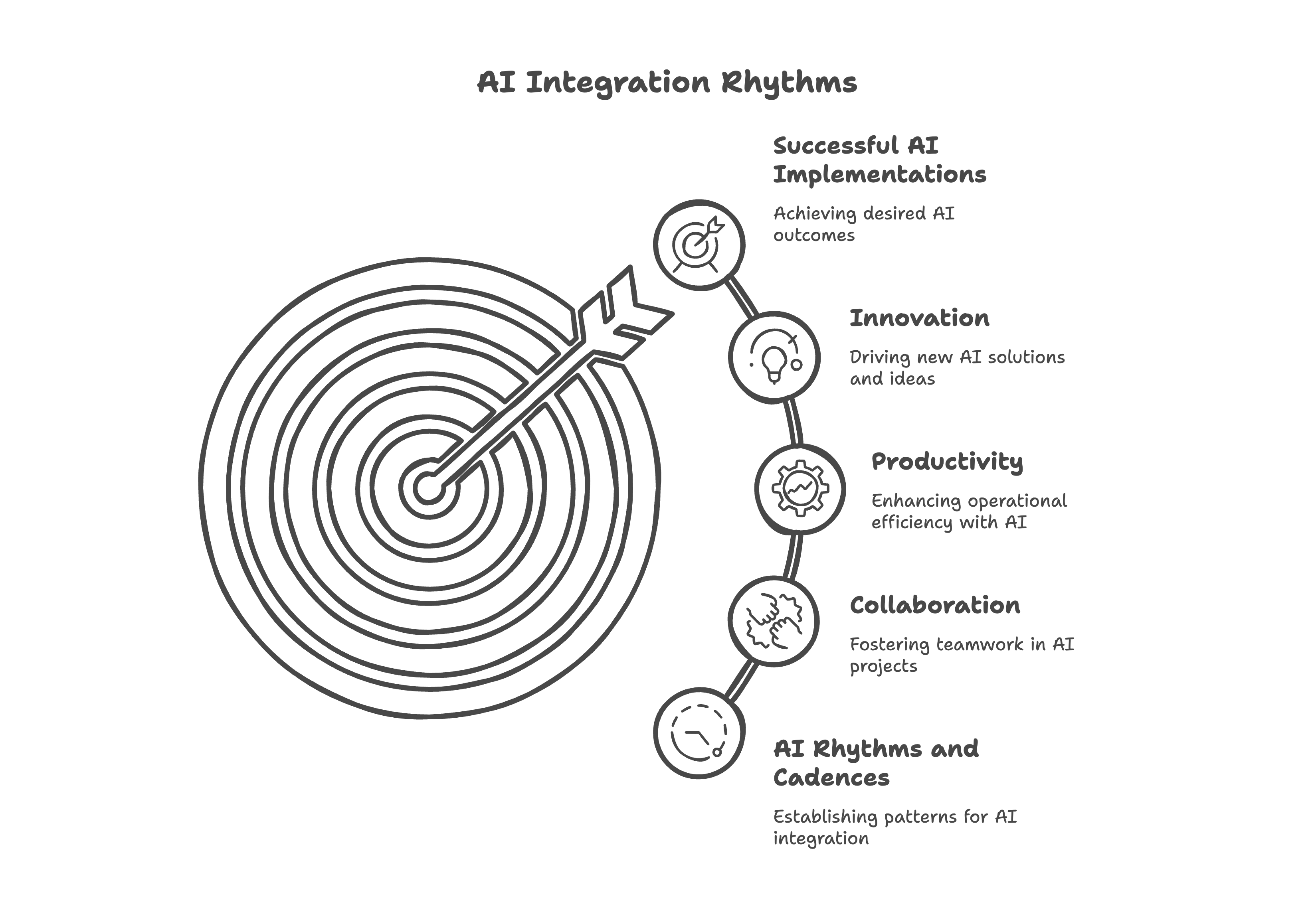Introduction
In today’s fast‑moving world, setting up business rhythms with AI can transform how organizations plan, execute, and learn. Rather than ad‑hoc meetings and manual status reports, you can set up predictable cadences—weekly, monthly, quarterly—powered by artificial intelligence. This approach keeps your team aligned on goals, surfaces risks early, and drives faster decision‑making. In this guide, we’ll show you exactly how to set up business rhythms with AI, step by step.
1. Why Business Rhythms Matter
A business rhythm is a regular, recurring meeting cadence—like a Weekly Business Review (WBR) or Monthly Business Review (MBR)—that drives alignment and accountability. When you setup business rhythms with AI, you:
-
Align on clear goals every cycle
-
Catch risks early, thanks to automated alerts in Slack, Teams, Zoom, and email.
-
Free teams from manual data gathering to focus on decisions.
-
Build a culture of continuous improvement through rapid feedback loops.
2. Step 1: Define and Connect Your Goals
-
Articulate OKRs or KPIs once. Choose 2–4 objectives per cycle (e.g., week, month).
-
Assign ownership. Each goal needs a clear owner for updates and accountability.
-
Map to data sources. Link each KR to relevant systems—CRM, product analytics, support tickets.
Tip: In Brev, you register goals once and AI continuously pulls real‑time signals.
3. Step 2: Map Your Calendar & Cadences
-
Block core slots. Schedule recurring WBR, MBR, and QBR in your shared calendar.
-
Embed prep time. Reserve 24 hours before each review for AI‑generated pre‑reads.
-
Rotate facilitators. Give each function (e.g., marketing, product, sales) a chance to lead to foster cross‑team collaboration.
Why it works: Consistent calendar invites make your AI‑powered rhythms non‑negotiable organizational milestones.
4. Step 3: Integrate Your Data & Collaboration Tools
-
Task & Dev Tools: Connect tools like Jira, Asana, Linear, GitHub, or Asana to track progress.
-
Sales & Support: Hook up your CRM like Salesforce Hubspot and helpdesk such as Zendesk or Vitally for revenue and customer signals.
-
Analytics Platforms: Bring in Google Analytics, PostHog, Amplitude, or Mixpanel for usage trends.
This AI integration eliminates manual spreadsheets and ensures your rhythms run on fresh, unified data.
5. Step 4: Layer on AI‑Driven Insights
-
Automated Trend Detection: AI spots deviations—like a sudden drop in sales velocity.
-
Drafted Narratives: First‑pass “Wins, Risks, Next Steps” are written for you, slashing prep time by ~80%.
-
Risk & Dependency Flags: Unresolved tickets or overdue items get surfaced before review.
Pro tip: For more on drafting AI‑powered updates, see our post on Running Weekly Business Reviews with AI
6. Step 5: Automate, Monitor & Iterate
-
Auto‑Generate Decks: Branded slide packs appear minutes before your meeting.
-
Smart Reminders: Owners get nudges 24 hours ahead with their sections to review.
-
Continuous Feedback: After each meeting, a one‑question pulse survey gauges value.
-
Iterate Cadences: Quarterly retrospectives let you tweak agenda items—drop what’s stale, add new focus areas.
This continuous loop ensures your business rhythms with AI evolve as your organization grows.
7. Conclusion & Next Steps
Setting up business rhythms with AI turns manual check‑ins into high‑velocity decision forums. By defining goals, mapping cadences, integrating data, layering AI insights, and iterating continuously, you’ll unlock better alignment, faster risk mitigation, and a culture of perpetual learning. If helpful, here is more tactical guide for how to set up business rhythms with AI: setup guide.
👉 Ready to automate your business rhythms? Explore Brev’s AI‑powered platform and get started today.
9. FAQs
Q1: What are business rhythms?
Regularly scheduled meetings (weekly, monthly, quarterly) are designed to review progress, surface issues, and make decisions.
Q2: How does AI enhance business rhythms?
AI automates data collection, drafts narrative insights, flags risks, and keeps your cadence on track without manual effort.
Q3: Can small teams benefit from AI‑powered rhythms?
Absolutely. Even a two‑person team saves hours each cycle by leveraging AI for status drafting and risk detection.
Q4: How do I start without a heavy implementation?
Begin by connecting one data source (e.g., CRM) to an AI tool, define a single weekly review cadence, and expand from there.
